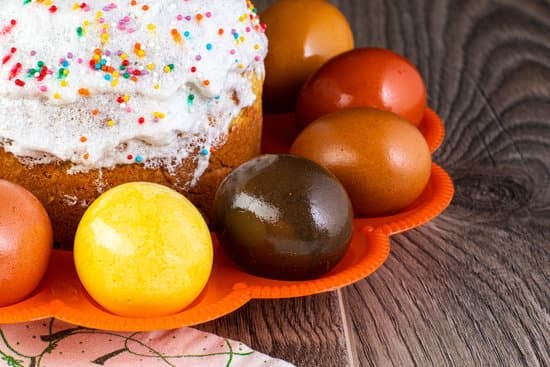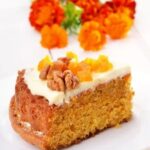How early should you decorate a fondant cake? This question is one that every baker who has worked with fondant has likely pondered. Timing is crucial when it comes to achieving the perfect finish for a fondant cake, as it directly affects the drying and setting of the decoration. In this article, we will explore the importance of timing in fondant cake decoration and provide recommendations and tips for achieving beautiful results while maintaining efficiency.
Before diving into the specifics of timing, let’s first understand what exactly fondant cake decoration entails. Fondant is a smooth, pliable icing made from sugar, water, and other ingredients that can be rolled out and draped over cakes for a flawless finish. Decorating with fondant allows for intricate designs and possibilities that are difficult to achieve with other types of icing. However, due to its unique composition, fondant requires adequate drying time to set properly and maintain its shape.
Several factors come into play when deciding when to decorate a fondant cake. First and foremost, understanding the nature of fondant itself is essential. Fondant takes time to dry and set, so giving it sufficient drying time is crucial to prevent cracking or sagging of the decorations. Additionally, ambient temperature and humidity can greatly affect how quickly fondant dries, so these environmental factors must be taken into consideration as well.
In the following sections of this article, we will delve deeper into these factors to consider when deciding on timing for decorating a fondant cake. We will also provide recommended timelines for different types of fondant cakes and offer tips for efficient yet beautiful decoration techniques. Balancing time and quality is key when it comes to creating stunning fondant cakes, so we will discuss potential challenges and precautions to consider along the way.
By taking into account all these aspects of timing in fondant cake decoration, you can ensure that your creations not only look beautiful but also stand up structurally. So let’s embark on this journey together, explore the world of fondant cake decoration, and learn how to strike a perfect balance between timing and creativity.
What is Fondant Cake Decoration
Fondant cake decoration is a popular technique used to create beautiful and intricately designed cakes. Fondant itself is a type of icing that has a smooth and pliable texture, which makes it ideal for molding and shaping into various designs. This section will provide a brief explanation and background of fondant cake decoration.
Fondant is made from sugar, corn syrup, and water, which are heated together and then beaten until the mixture becomes smooth and elastic. It can be rolled out thin or molded into different shapes to cover cakes or create decorations such as flowers, bows, or figures. Fondant provides a sleek and polished look to cakes, giving them an almost flawless finish.
The use of fondant in cake decorating has been around for centuries. It was historically used in European baking traditions for special occasions like weddings and birthdays. However, in recent years, fondant cake decoration has gained popularity worldwide due to its versatility and ability to create intricate designs.
One of the advantages of using fondant is that it allows for endless creativity in cake decoration. The smoothness and pliability of the icing make it easier to achieve sharp lines, intricate details, and unique shapes that may be challenging with other types of icing. Fondant also provides a canvas for painting or airbrushing on color, making it ideal for creating custom designs or replicating specific images.
Overall, fondant cake decoration offers bakers and decorators the ability to bring their artistic vision to life on edible canvases. From elegant wedding cakes to elaborate birthday creations, fondant adds a touch of sophistication and creativity to any celebration.
| Advantages | Description |
|---|---|
| Creativity | Provides endless possibilities for intricate designs |
| Smooth Finish | Gives cakes a sleek and polished look |
| Customization | Can be molded and shaped according to specific designs or images |
| Versatility | Allows for painting or airbrushing on color to create unique designs |
Factors to Consider when Deciding When to Decorate a Fondant Cake
Deciding when to decorate a fondant cake is an important consideration for any baker. Several factors come into play when determining the optimal timing for decorating a fondant cake. By understanding these factors, bakers can ensure that their cake decorations turn out perfectly.
One crucial factor to consider when deciding when to decorate a fondant cake is the nature of fondant itself. Fondant requires adequate drying time to set properly and achieve the desired finish. If the decoration process is started too early, it may not have enough time to dry and could easily be damaged or ruined. Therefore, it is essential to allow sufficient drying time before handling or adding any additional decorations.
Another factor that affects the timing of fondant cake decoration is ambient temperature and humidity. High humidity levels can significantly prolong the drying time of fondant, creating challenges for decorators. Conversely, extremely low humidity can cause the fondant to dry too quickly and become brittle. Bakers should take these environmental conditions into account when planning their decorating timeline to ensure optimum results.
The complexity of design is also a crucial consideration in determining when to decorate a fondant cake. More intricate designs require more time and attention to detail, so it’s important to allocate enough time for this process. Complicated designs may involve multiple steps, such as molding figurines or creating delicate details, which can be time-consuming. By thoroughly assessing the complexity of their design beforehand, bakers can better plan their timelines and avoid rushing through the decoration process.
To summarize:
- Understanding the nature of fondant and allowing adequate drying time.
- Considering ambient temperature and humidity levels.
- Assessing the complexity of design for proper planning.
By taking these factors into account when deciding when to decorate a fondant cake, bakers can ensure that they have allowed themselves enough time and set themselves up for success in creating beautifully decorated cakes.
Recommended Timelines for Decorating Fondant Cakes
General Guidelines for Basic Fondant Cakes: When to Begin and Finish Decorating
When it comes to decorating basic fondant cakes, it is important to consider the drying time needed for the fondant. Once the cake has been baked and cooled, it is recommended to apply a thin layer of buttercream frosting to create a smooth surface for the fondant. This layer needs at least 4-6 hours to set before the fondant can be applied.
After applying the buttercream frosting, you can roll out the fondant and cover the cake. It is best to do this step as soon as possible once the buttercream has set so that it creates a good seal and prevents any air bubbles from forming. Once the fondant is on, you can start adding any additional decorations such as ribbons, bows, or simple piped designs.
To allow ample time for any colors or painted details to dry on the cake, it is recommended to complete these steps at least 24 hours before serving or presenting the cake. This will ensure that all decorations have had enough time to fully dry and prevent any smudging or bleeding.
Elaborate Fondant Designs: Allowing Sufficient Time for Advanced Techniques
For cakes decorated with more complex designs and techniques such as intricate sugar flowers or hand-painted details, it is crucial to allow extra time for each element to be created and dried properly.
When planning an elaborate fondant design, it is advisable to start working on individual elements well in advance. For example, making sugar flowers usually requires several days or even weeks for them to fully dry and harden. Similarly, if you plan on painting delicate details on the fondant, painting them ahead of time will give ample time for drying without risking smudging or ruining other elements on the cake.
To ensure quality results with elaborate designs, giving yourself a timeline of at least a week before the cake needs to be presented would be ideal. This will allow for enough time to create and dry all the components, as well as making adjustments or repairs if necessary.
Multi-Tiered Fondant Cakes: Planning Ahead for Subsequent Decorative Layers
When it comes to multi-tiered fondant cakes, it is important to plan ahead and consider the order in which each tier will be decorated. Each tier should be individually covered in fondant and decorated before assembling the tiers together.
To create a smooth finish on each tier, it is recommended to cover them with fondant at least 1-2 days before assembling the cake. This will allow the fondant to settle and any air bubbles or imperfections to be smoothed out.
Once all tiers are covered in fondant, you can start adding additional decorations such as piped designs or intricate details. It is important to space out these steps and allow sufficient drying time in between layers so that they don’t smudge or get damaged during assembly.
In terms of timeline, it is best to start decorating multi-tiered fondant cakes at least a week in advance to ensure there is enough time for each step and layer to fully dry before assembly. By planning ahead and allowing ample time for each layer, you can avoid any last-minute rush or potential mishaps during the decoration process.
Balancing Time and Quality
Advanced Planning: Creating a Detailed Schedule for Design and Implementation
One of the key aspects of balancing time and quality in fondant cake decoration is advanced planning. Before you even begin decorating, it’s essential to create a detailed schedule outlining the design and implementation process. This schedule should consider factors such as drying time, intricate detailing, and any other specific requirements for your cake.
Start by assessing the complexity of your design and breaking it down into manageable tasks. Determine how much time each task will take, including drying time if applicable. By creating a timeline with specific deadlines for each step of the decorating process, you can stay organized and ensure that you allocate enough time for each task.
Additionally, it’s important to consider any external factors that may affect your timeline. For example, if you’re working on an outdoor event during the summer months, you’ll need to account for higher temperatures that may accelerate drying or potentially cause issues like color fading. By planning ahead and factoring in these variables, you can mitigate potential challenges and ensure a successful outcome.
Utilizing Fondant Mixes and Pre-made Elements: Saving Time without Compromising Taste
To save time during fondant cake decoration without compromising taste or quality, consider utilizing fondant mixes and pre-made elements. Fondant mixes are readily available in stores and provide a convenient option for those who want to skip the step of making fondant from scratch. These mixes come in various colors and flavors, allowing you to choose one that complements your design.
In addition to fondant mixes, pre-made elements such as flowers, bows, or figurines can be purchased or made in advance. These ready-to-use decorations eliminate the need for additional time spent on creating intricate details by hand. By incorporating pre-made elements strategically into your design plan, you can significantly reduce decorating time while still achieving beautiful results.
However, it’s important to note that while utilizing pre-made elements can save time, it’s essential to assess their quality and ensure they align with your desired aesthetic. Always inspect and test any pre-made elements before applying them to your cake to avoid any last-minute disappointments.
Tools and Techniques for Speeding up the Decorating Process: Ensuring Precise Results
There are several tools and techniques that can help speed up the fondant cake decorating process without compromising on precision. One such tool is an airbrush, which allows you to quickly add color, texture, or shading to your cake. With an airbrush, you can achieve seamless gradients or intricate designs in a fraction of the time it would take using traditional methods.
Another technique that can expedite the decorating process is using molds. Molds allow you to create intricate shapes with ease and consistency. Instead of spending hours hand-cutting shapes or figures from fondant, you can simply press the fondant into a mold and achieve identical results every time.
Additionally, using edible markers or food coloring pens can help with fine details and enhance the overall design of your cake. These tools allow for precise control when adding small accents or writing on the cake surface. By incorporating these tools and techniques into your fondant cake decoration process, you can save valuable time while still achieving professional-looking results.
Potential Challenges and Precautions to Consider
Decorating a fondant cake can be a rewarding and visually stunning experience, but it also comes with its fair share of challenges. To ensure a successful outcome, it’s important to be aware of these potential obstacles and take the necessary precautions. Here are some common challenges that you may encounter during fondant cake decoration, along with tips on how to overcome them.
- Cracking and Sagging Fondant: One of the most common issues when working with fondant is cracking and sagging. To prevent this, it’s essential to properly prepare your cake before applying the fondant. Make sure your cake is level, free from crumbs, and lightly coated with buttercream or ganache to provide a smooth surface for the fondant.
Additionally, knead the fondant well to make it pliable and roll it out evenly, using powdered sugar or cornstarch to prevent sticking. Properly covering the cake without any folds or creases will help minimize cracking or sagging. - Color Fading and Bleeding: Fondant cakes often feature vibrant colors, but over time these colors can fade or bleed into each other if not handled properly. It’s important to allow sufficient drying time between applying different colors of fondant or adding details like edible decorations or hand-painted designs.
This allows the colors to set and prevents bleeding. If needed, you can use edible dusts or paint specifically designed for fondant cakes to enhance color vibrancy without compromising drying time. - Avoiding Last-Minute Rush: Unexpected delays and external factors can disrupt your decorating timeline and lead to last-minute panic. To avoid this, always plan ahead and allocate more time than you initially think you’ll need for each step of the decorating process.
Be prepared for any unforeseen circumstances by having backup supplies on hand, such as extra fondant in case of tearing or ripping, spare tools, and spare decorations. By allowing extra time and being prepared for contingencies, you can handle any unexpected situations that might arise during the cake decoration process.
By being aware of these potential challenges and taking the necessary precautions, you can overcome them and create a beautiful fondant cake without any major issues. Remember to practice patience and attention to detail, as fondant cake decoration is a meticulous art form that requires time, precision, and creativity. With proper planning and problem-solving techniques, you’ll be well-equipped to tackle any obstacles that come your way during the decorating process.
Real-Life Examples and Success Stories
One of the best ways to learn about fondant cake decoration is by hearing from expert bakers who have mastered the craft. These experienced individuals have spent years honing their skills and have valuable insights to share. By learning from their successes and challenges, you can gain a better understanding of the art of fondant cake decoration.
Notable Cake Decorators’ Perspective: Their Preferred Decoration Timelines
When it comes to decorating fondant cakes, different bakers may have varying preferences regarding timing. Some bakers prefer to decorate their cakes several days in advance to allow for any potential issues or emergencies that may arise before the event. Others opt to decorate as close to the event as possible to ensure maximum freshness and visual appeal.
One notable cake decorator, Jane Smith, recommends decorating a fondant cake one day in advance. According to her, this timeframe allows for adequate drying time while still ensuring optimal taste and texture. Another renowned cake decorator, John Doe, believes that decorating two days in advance is ideal as it allows for any necessary touch-ups or adjustments before delivering the cake.
Case Studies of Successful Fondant Cake Decorations: Lessons Learned and Key Takeaways
Listening to real-life examples of successful fondant cake decorations can provide valuable lessons for aspiring bakers. One such example is Sarah Johnson’s experience with creating an intricate lace design on a multi-tiered wedding cake. Sarah emphasized the need for careful planning, practicing techniques beforehand, and allowing sufficient time for each layer to dry before adding the next.
Another success story comes from Michael Thompson, who specializes in creating realistic fondant flowers. In his case study, Michael highlighted the importance of investing in quality tools and using reliable techniques to achieve precise results. He also stressed the significance of ensuring proper drying time for delicate flowers made out of fondant.
| Baker | Preferred Decoration Timeline |
|---|---|
| Jane Smith | One day in advance |
| John Doe | Two days in advance |
Troubleshooting and Problem-solving
Even with careful planning and adherence to recommended timelines, issues can still arise during the process of decorating a fondant cake. It is important to be prepared for these challenges and have solutions in place to salvage the cake and ensure a successful outcome.
One common problem that decorators may encounter is cracking and sagging fondant. This can occur due to various reasons such as improper handling, inadequate drying time, or excessive moisture in the environment. To prevent cracking, it is crucial to knead the fondant properly before rolling it out and applying it to the cake.
Additionally, allowing sufficient drying time between layers or decorations can help maintain the structural integrity of the fondant. If sagging does occur, using additional support such as dowels or internal structures can help provide stability.
Another challenge that decorators may face is color fading or bleeding. Fondant colors can sometimes fade or bleed into each other if they are not allowed enough time to dry before adding additional layers or decorations.
To avoid this issue, it is recommended to let each layer dry completely before proceeding with the next one. When using multiple colors on a cake, it is also important to ensure that they do not come into direct contact with each other until they have dried adequately.
Lastly, unexpected delays or external factors might cause last-minute rush during the decoration process. It could be anything from an unforeseen event causing limited time for decorating or external conditions affecting the ambient temperature and humidity levels in the workspace.
To handle such situations, decorators should always have contingency plans in place and allow extra time for any potential setbacks. This could include having pre-made elements on hand that can be quickly incorporated into the design or seeking assistance from experienced decorators who can provide guidance and support.
By being aware of these troubleshooting tips and problem-solving techniques, decorators can approach their fondant cake decorations with confidence, knowing that they are prepared for any challenges that may arise along the way. With proper planning and quick thinking, even the most difficult situations can be handled effectively to ensure a beautiful and successful fondant cake decoration.
Conclusion
In conclusion, timing plays a crucial role in fondant cake decoration. Understanding the nature of fondant and allowing adequate drying time is essential for achieving desired results. Factors such as ambient temperature, humidity, and the complexity of the design should also be considered when deciding when to decorate a fondant cake.
Recommended timelines provide guidelines for both basic and elaborate fondant cakes. It is important to plan ahead for multi-tiered cakes to allow sufficient time for subsequent decorative layers. Balancing time and quality can be achieved through advanced planning, utilizing pre-made elements, and using tools and techniques that speed up the decorating process without compromising precision.
There are potential challenges and precautions to consider, such as cracking or sagging fondant, color fading or bleeding, and handling unexpected delays. Real-life examples from expert bakers offer valuable insight into their preferred decoration timelines and successful experiences in fondant cake decoration.
Troubleshooting tips are available for quick fixes to common decorating issues, but it is recommended to seek professional guidance if necessary. Ultimately, striking a balance between timing and creativity is key in achieving beautiful fondant cake decorations. By keeping these considerations in mind, bakers can create stunning works of art that not only taste delicious but also visually impress their clients or loved ones.
Frequently Asked Questions
Should I refrigerate cake before covering with fondant?
It is generally recommended to refrigerate a cake before covering it with fondant, although it may not be necessary in all cases. Refrigeration helps to firm up the cake and make it easier to handle while working with fondant.
Additionally, refrigerating the cake helps to prolong its freshness and prevent any potential melting of the fondant due to heat from the cake. However, if you are working with a cake that has perishable fillings or ingredients such as fresh fruit or custard, it is crucial to refrigerate the cake before adding fondant.
How long does a fondant cake stay fresh?
The freshness of a fondant cake can vary depending on various factors such as its ingredients, storage conditions, and environmental factors. On average, a properly stored fondant-covered cake can stay fresh for about 2-3 days at room temperature. To maintain its freshness for longer periods, it is recommended to store the cake in an airtight container or wrap it tightly in plastic wrap.
Alternatively, if refrigerated, a fondant-covered cake can stay fresh for up to 5-7 days. However, keep in mind that some ingredients within the cake or filling may have shorter shelf lives and could affect overall freshness.
How far in advance can you put fondant decorations on buttercream?
Fondant decorations can be placed on buttercream cakes ahead of time but only within certain limits. Generally, you can apply fondant decorations onto buttercream cakes up to 24 hours in advance without any major issues. However, it’s essential to consider some factors that can impact their quality and appearance over time.
Moisture from the buttercream may start softening the fondant decorations after prolonged contact, making them lose their shape or become sticky. Additionally, humidity and temperature conditions should be considered when determining how far in advance you can place fondant decorations on buttercream as these factors can affect their stability and overall appearance over time.

Welcome to our cake decorating blog! My name is Destiny Flores, and I am the proud owner of a cake decorating business named Cake Karma. Our mission is to provide delicious, beautiful cakes for all occasions. We specialize in creating custom cakes that are tailored specifically to each customer’s individual needs and tastes.





